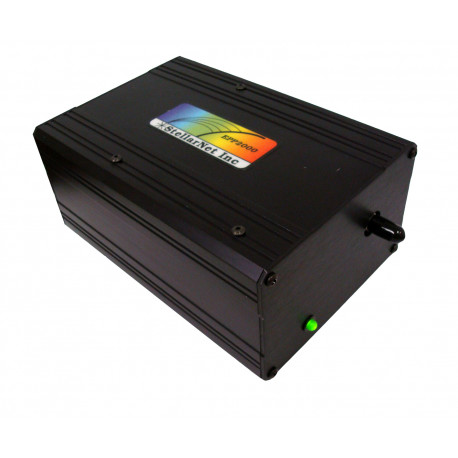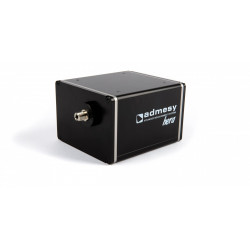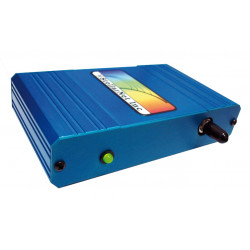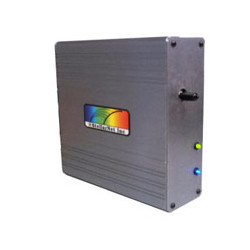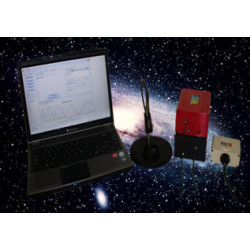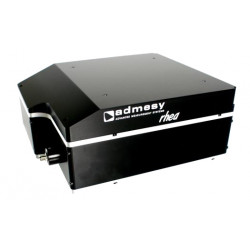Description
Concave Grating Spectrometer BLACK-Comet from StellarNet
StellarNet´s concave grating spectrometer delivers high performance for spectroscopy applications in the UV-VIS wavelength ranges covering 190 - 850 nm (model C), or optionally 280 - 900 nm (model CXR). The instruments are exceptionally robust with no moving parts, and are packaged in small rugged metal enclosures (2.75 x 4 x 6 inch) for portable spectroradiometry and lab or process spectroscopy measurements. The BLACK-Comet UV-VIS concave grating spectrometer utilizes a 40 mm diameter concave grating with aberration correction to provide superb spectral imaging. This significantly improves spectral shapes by reducing comma and astigmatism found in plane grating spectrograph designs. The spectrograph architecture does not utilize mirrors, and therefore provides the lowest possible stray light in the UV with additional assistance from the holographic line grating. The concave grating produces a flat field on the CCD detector creating uniform resolution over the entire range.
Advantages of the Concave Grating Spectrometer
One of the main advantages of the concave grating spectrometer BLACK-Comet is its ability to drastically reduce straylight levels, 0.02 % at 435 nm and 0.2 % at 200 nm, the lowest values of any field spectrometer. By design, the holographic grating has a smoother surface than the normal ruled gratings used in competing spectrometer models. Surface roughness is the primary source of grating generated stray light and thus by employing superior grating technology, StellarNet’s Concave Grating Spectrometers are able to drastically reduce the effect. Additionally, grating scatter in the standard Czerny Turner design is collected and focused by the focusing mirror toward the exit port, this does not occur with the concave grating spectrometer BLACK-Comet. When additional optical components like collimating and focusing mirrors are used in instrument design, it is more likely that light may be re-diffracted and scattered. Similarly, due to the spectrometers ability to reduce light scatter, especially high power UV light, the Concave Grating spectrometer provides two to three times enhanced UV sensitivity as compared to plane grating/Czerny Turner optical configurations.
Sensitivity of the Concave Grating Spectrometer
Spectral sensitivity is one of the most important factors in choosing the proper miniature spectrometer. The concave grating optical design allows for high sensitivity and a smooth spectral distribution over the wavelength range as shown in the above spectrum of a Tungsten Halogen lamp.
Specifications of the Concave Grating Spectrometer
| Dynamic Range: | 2000:1 with 6 decades | Dimensions: | 69 x 100 x 150 mm |
| Optical Resolution: | < 1 nm Resolving Res. with 25 µm slit | Power Consumption: | 100 mA @ 5 VDC |
| Detector Type: | 2048 pixel CCD, PDA opt. | Interface: | USB-2 |
| Detector Range: | C = 190 - 850 nm or CXR = 280 - 900 nm | Data Transfer Speed: | 3x / 40x faster than USB-1 |
| Pixel Size: | 14 um x 200 um | Detector Integration: | 1 ms to 65 s |
| Concave Grating: | Aberration corrected | Slit Size Options: | 14, 25, 50, 100, 200 µm |
| Grating Type: | Holographic, 590 g/mm | Stray Light: | 0.02 % at 435 nm; 0.2 % at 200 nm |
| Spectrograph: | f/2, Flat field - No mirrors | Fiber Optic Input: | SMA905 0.22 na single fiber |
| Order Sorting Filter: | Integrated multi-band | Operating Systems: | Windows XP/Vista/7 |
| Signal to Noise: | 1000:1 CCD, PDA 2000:1 | Software Included: | SpectraWiz program & apps |
| Digitizer: | 16-bit | Also Free Programs For: | LabView / VC / VBA / Delphi |
